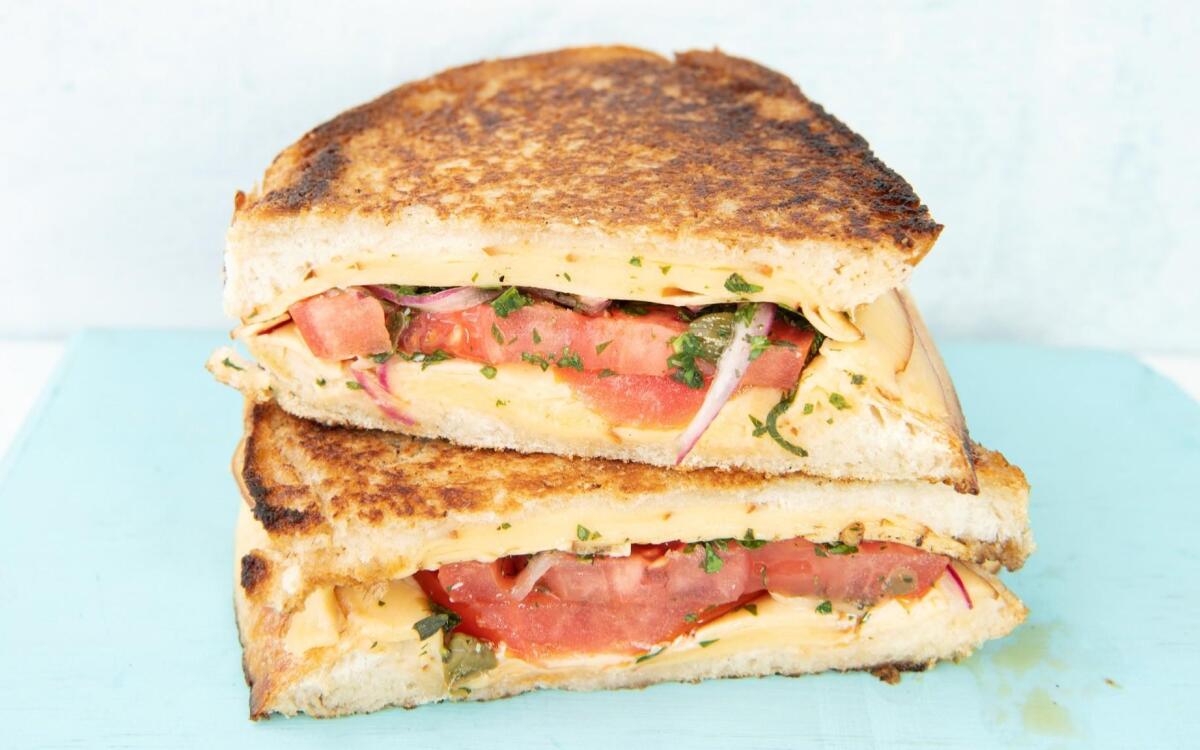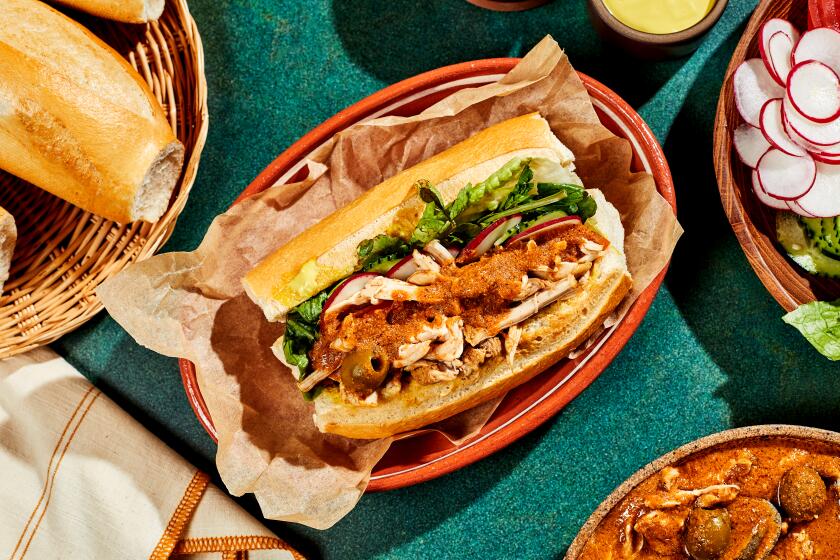Grilled Cheese with Marinated Tomatoes

Thereâs a primal wonder to smoked food â that such depth of flavor can come from so simple a technique. And then thereâs the fun of the process itself, whether youâre working with a formal smoker setup or one youâve âMacGyver-edâ out of odds and ends. Because, with a little creativity, you can smoke almost anything.
As for flavor, thereâs more to it than mere âsmokiness.â Youâll find a great variety of character depending on the type of wood used and its intensity. Woods range from assertive hickory to delicate apple. Cherry is pronounced and pecan lends a fragrant nuttiness. Mesquite can be either delicately sweet or overwhelmingly assertive, depending on how (and how much) itâs used. Itâs not hard to find alder (popular in the Northwest) or corncob (possibly best known in the Northeast). Or try flavored hardwoods â wine casks, maybe, or bourbon-soaked oak.
You donât even need to smoke with wood at all. Try tea or seaweed, or rice, nut shells and aromatics, such as spices, herbs and citrus peel.
And where meat is probably the most traditional of smoked foods, flavoring options are almost endless, from nuts, fruit, yogurt and cheeses. Imagine having a cocktail with smoked ice.
Think smoking, and the first type of smoking that comes to mind is hot-smoking: using smoke over high heat to both cook and flavor foods, including brisket, ribs, chicken and sausages.
Cold smoking is similar to hot smoking but without the heat. This type of smoking is strictly about flavor.
When cold-smoking, smoke is typically transmitted from one chamber to another over a distance, so the food is flavored but not cooked. This is generally done for much longer, from a couple of hours up to a day or more. Because of this, cold-smoked food is previously cooked or preserved in some way â whether fermented, pickled or cured â so it doesnât go bad as it smokes.
To create a cold smoker, attach a tube of some sort from your hot smoker to a separate chamber. An online search will reveal a lot of creative ideas, including using dryer vent tubes and pipes. You can also use a single-chamber smoker provided the smoke source doesnât generate too much heat and the temperature stays cool.
If youâre doing something simple, like cheese, a basic box smoker will work on a chilly morning, when the outdoor temperature will help keep the chamber cool.
Before smoking, refrigerate the cheese uncovered the night before so it develops a âpellicleâ â that sticky surface to which the smoke will adhere. For smoked applewood Comte, place small wedges (no thicker than 2 inches) of cheese on a rack toward the top of the smoker, and place a tray of ice above and underneath the cheese to keep it cool. Wood pellets work well here; a small tray of pellets can smolder for hours, generating lots of flavorful smoke.
Check the cheese occasionally to make sure it stays cool; if the cheese starts to sweat, the heat is too high. After just a couple of hours, the pale yellow cheese will have achieved a rich amber color and that telltale smoky perfume. Wrap it tightly and refrigerate it; the smokiness will mellow with time.
The cheese is perfect folded into omelets or other dishes, or simply sliced as part of a cheese tray.
But because itâs such a great melting cheese, try making a grilled cheese sandwich with it, perhaps the smoked Comte is best as part of a grilled cheese sandwich, nestled between two thick slices of rustic country loaf with a few marinated summer tomato slices wedged in for good measure.
Twitter: @noellecarter
Marinated tomatoes
In a bowl, whisk together the oil, vinegar, parsley, thyme, pepper flakes, salt and several grinds of black pepper. Stir in the onion, basil, capers and garlic. Spread a little of the marinade on the bottom of a large baking dish. Top with a layer of tomatoes. Spread over a little more marinade, then another layer of tomatoes. Top with the remaining marinade, cover and refrigerate at least 3 hours before serving. The marinated tomatoes will keep up to 2 days.
Place two slices of bread on a cutting board. Divide half of the cheese slices evenly between the two slices, then top with the sliced tomatoes. Top the tomatoes with the remaining cheese, then cover with the two slices of bread to form the two sandwiches. Heat a large cast-iron skillet or heavy-bottomed sautĂŠ pan over medium heat. Add 2 tablespoons butter and swirl in the pan until it is melted and starting to bubble. Place the sandwiches in the pan and grill until the bread is a rich golden brown and the cheese has started to melt. Carefully flip the sandwiches over, add the remaining butter and continue to grill until the other side is browned and toasted. Slice the sandwiches in half and serve immediately.
Get our Cooking newsletter.
Your roundup of inspiring recipes and kitchen tricks.
You may occasionally receive promotional content from the Los Angeles Times.
















